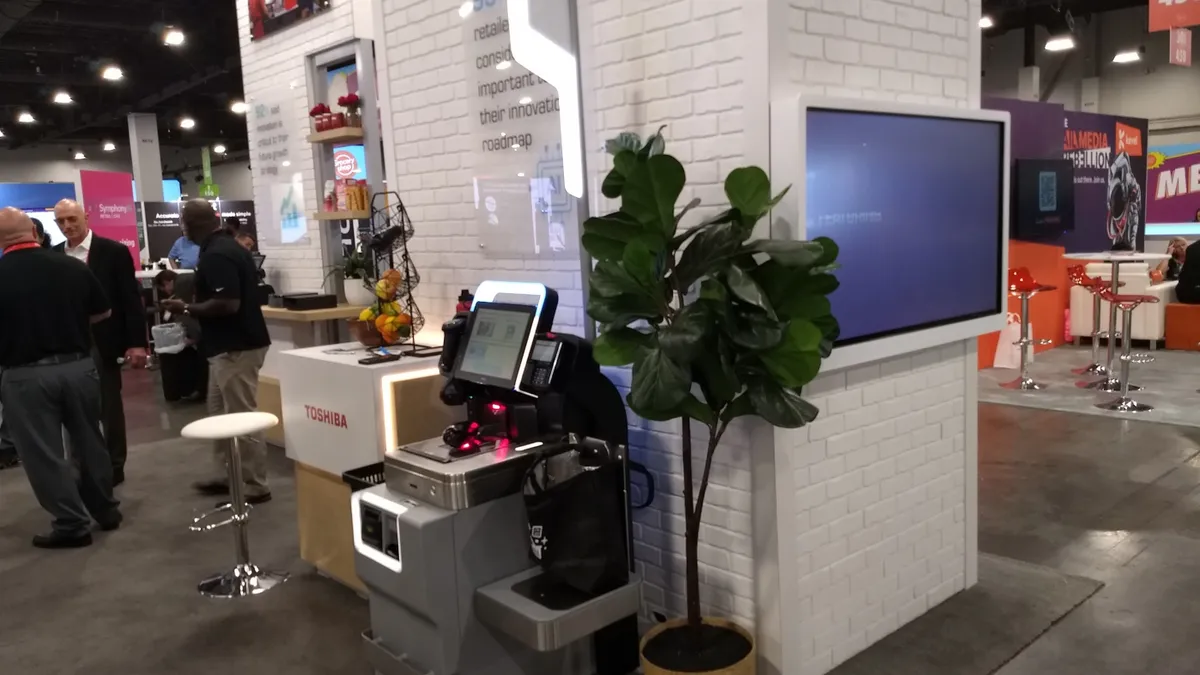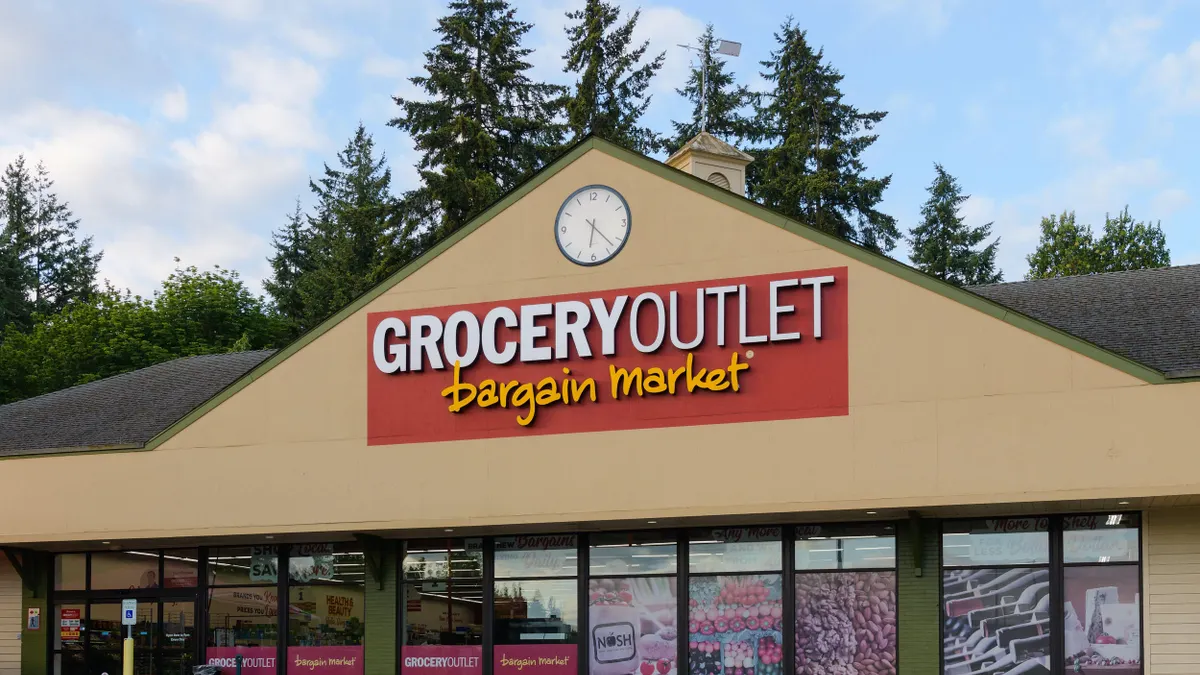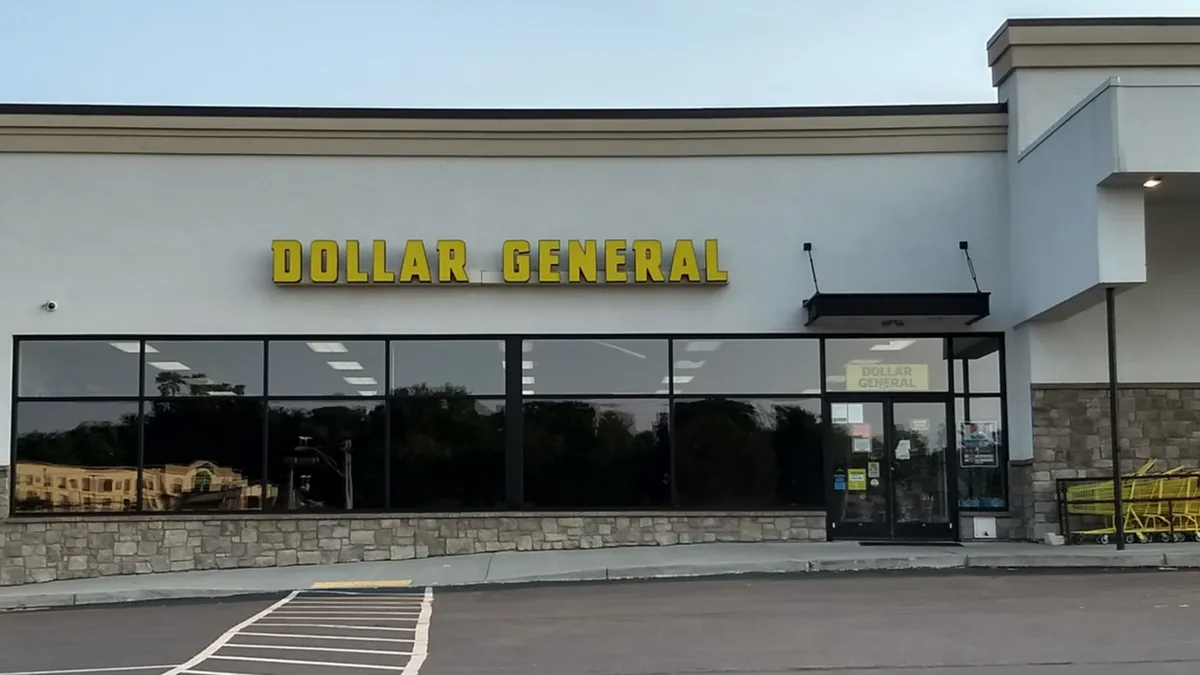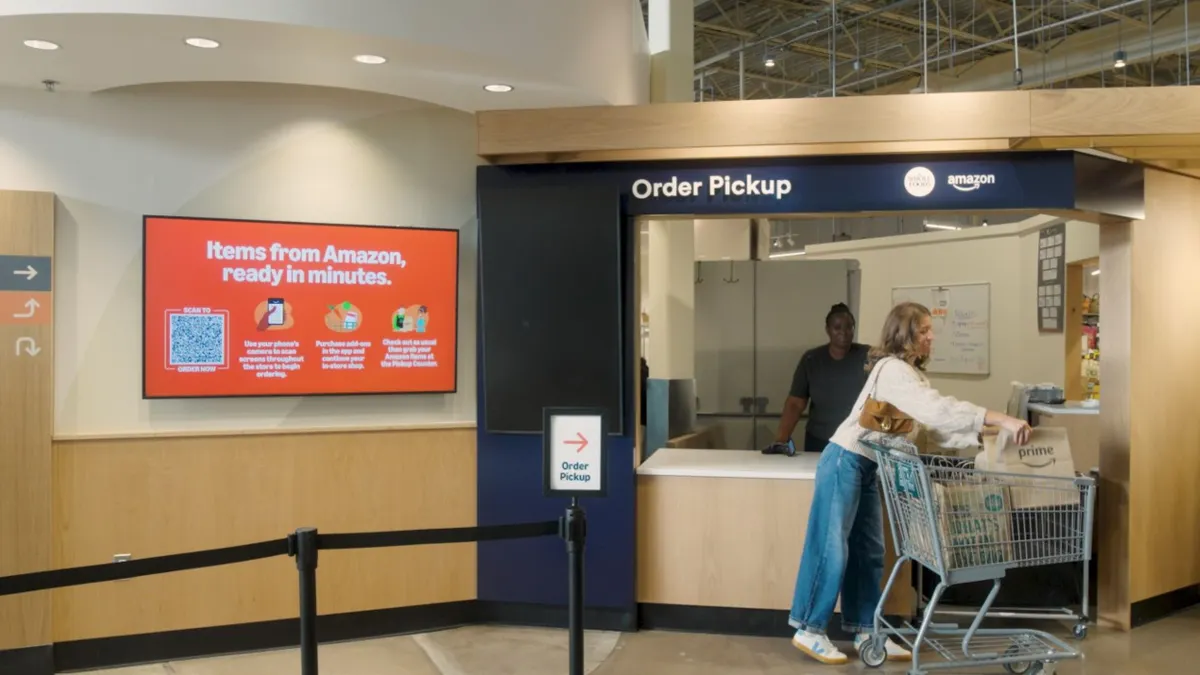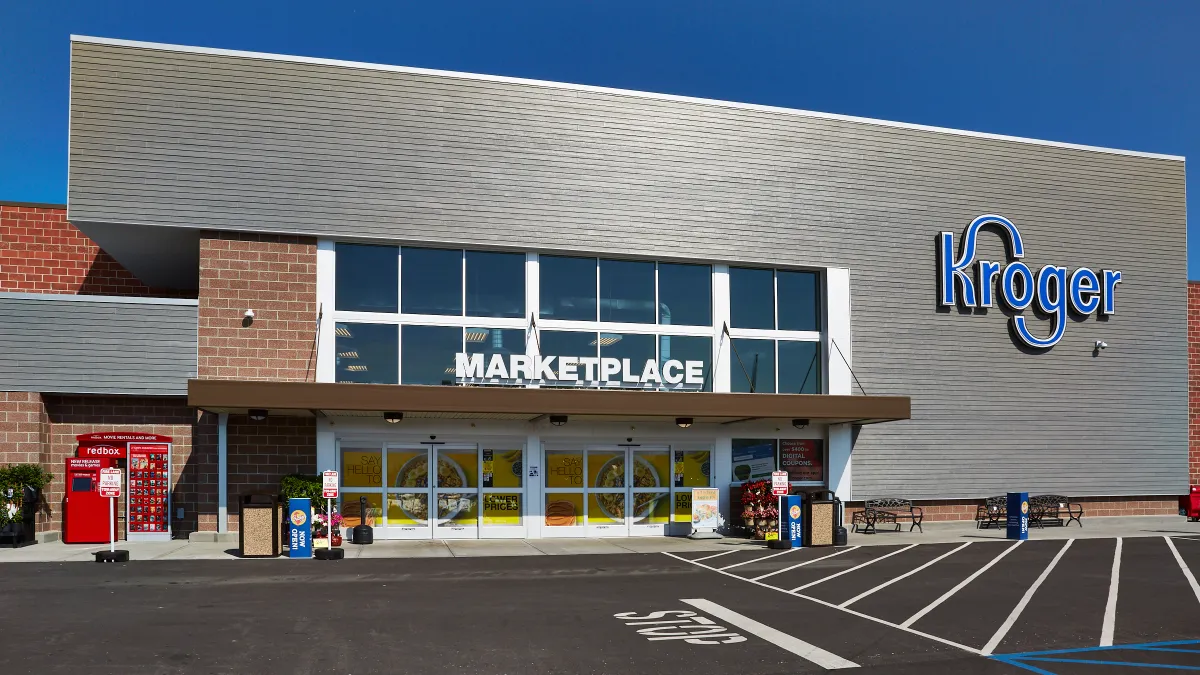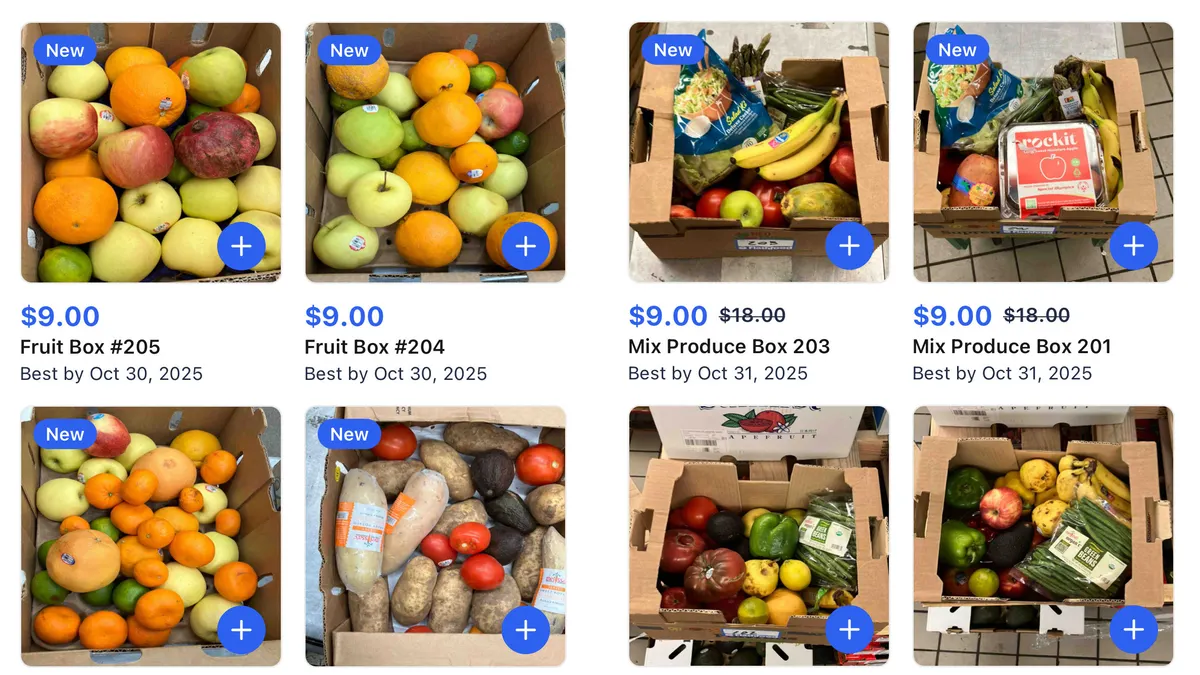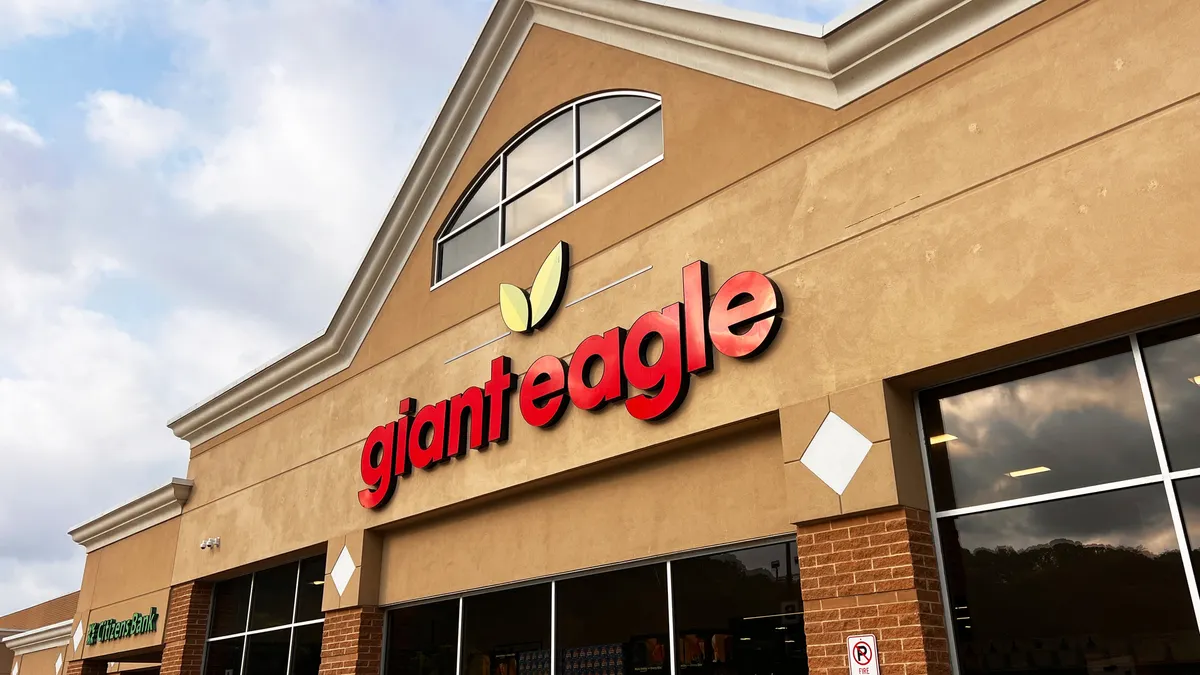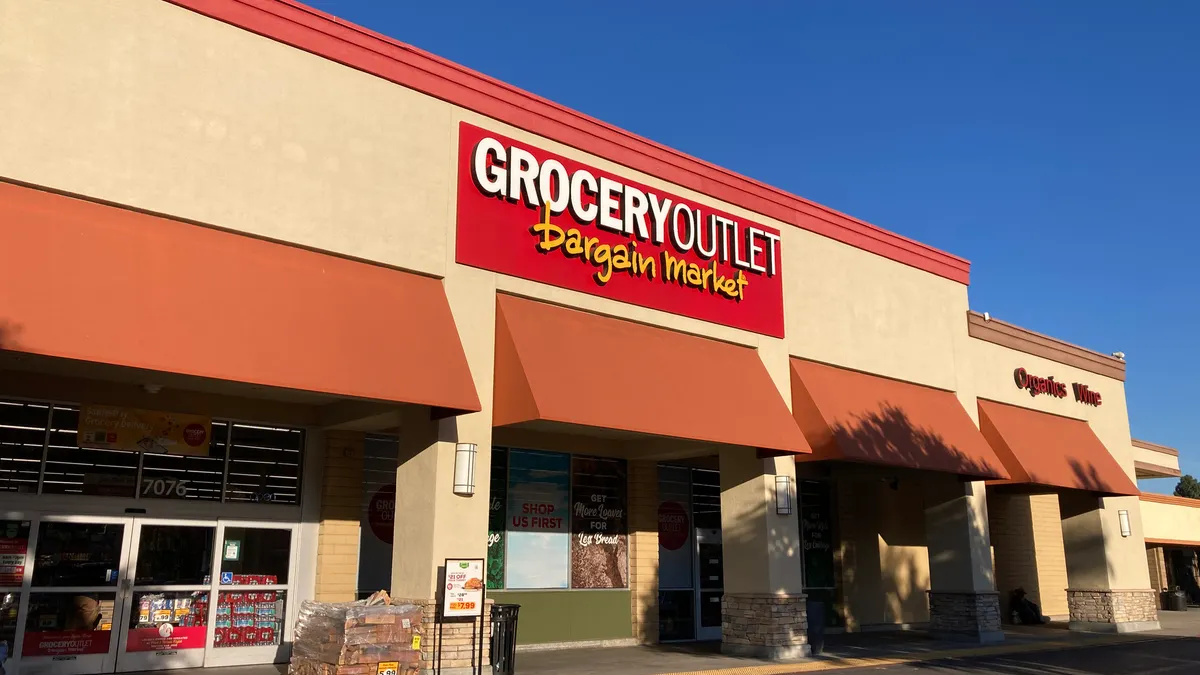LAS VEGAS — Mounted on the side of a Toshiba self-checkout terminal on display in the Groceryshop exhibit hall this week, an arm shaped like a lightning bolt promises to help grocers get a tighter grip on the theft crisis striking the retail industry.
The arm, which houses a camera designed to stop shoppers from taking items without paying for them, represents Toshiba’s latest effort to use computer vision technology to combat shrink. The company plans to make the equipment, which displays a message if a shopper neglects to scan an item, available to retailers in November as a part of the company’s broader effort to fortify its self-checkout stations against theft, said Michael Puma, solution sales team director for Toshiba Global Commerce Solutions.
Toshiba is not the only vendor to adopt computer vision to clamp down on self-checkout users who, intentionally or not, miss items when processing their orders. Puma said Toshiba Global Commerce Solutions, which was formed when Toshiba acquired IBM's retail store solutions business, has sought to set its implementation of the artificial intelligence-based concept apart by building image-processing systems into the self-checkout station instead of putting it elsewhere in the store.
Toshiba has also tapped computer vision tuned to recognize fruits and vegetables to ensure that shoppers use the correct PLU code when identifying produce at self-checkout stations, and the company plans next year to add the cameras to the bagging area of the self-service units, Puma said. Cameras that can spot items people leave in their cart at a self-checkout station are also on the way, he added.
Puma said he has seen strong interest among retailers in the new features during Groceryshop, with visitors to Toshiba’s booth at the conference indicating that fighting shrink has become one of their most pressing priorities.
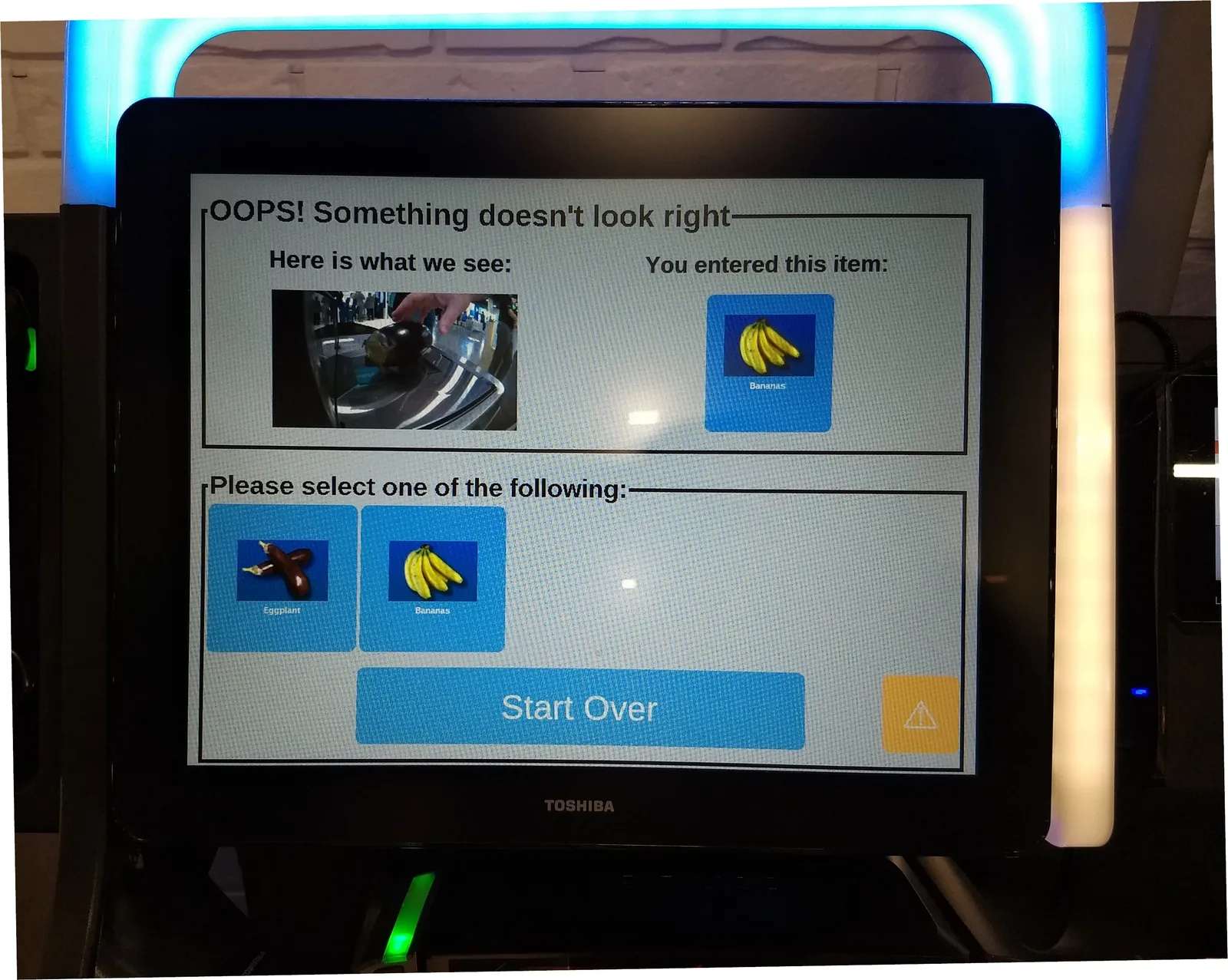
Other vendors with expertise in computer vision also said that clients have been asking for ways to use their technology to deal with theft.
“When we’ve been talking to retailers here at Groceryshop, definitely shrink is top of mind. It’s come up over and over again as a topic,” said Ken Fenyo, chief marketing officer of Grabango, which uses computer vision as the basis for frictionless checkout systems.
Interest among retailers in strategies to stop losses has been rising during the past three to six months, Fenyo added. “I wouldn't say it wasn't something we talked about in the past, but now it’s sort of people leading with it [and asking] ‘What are you doing? What’s happening with shrink?’”
Originally marketed as ways to make shopping faster, frictionless checkout systems also hold promise as a way to halt shrink because they track products from the moment shoppers remove them from store shelves, industry officials said.
Fenyo said that while frictionless checkout technology can’t actually stop someone who is intent on stealing from walking out with merchandise, it can provide retailers with data they can use to make changes that could make shrink less likely, such as by adjusting product locations on shelves.
Fenyo noted that Grabango has found that shoppers who take items from stores often still intend to pay for some of the items they want — a phenomenon he described as “partial shrink.” Frictionless checkout systems can alleviate that problem because they monitor every product as soon as it leaves the shelf, he said.
Artificial intelligence is so good at monitoring shopping behavior, in fact, that companies that develop and use it have to take strict precautions to avoid trampling on people’s rights, said Jordan Fisher, CEO of Standard AI, another frictionless checkout company. For example, computer vision systems in retail locations should be prevented from collecting images of people’s faces, he said.
“AI shouldn’t enable something that you couldn’t do as a human. Humans have good facial recognition, but what a human can’t do is identify the same person walking into one store that had walked into a different store on the other side of the country the day before,” said Fisher.
On the other hand, if used properly, automated systems can sharply enhance the ability of loss-prevention personnel to keep people from taking goods out of stores without paying, Fisher said.
“I think what’s encouraging about AI is that if you’re careful — and we take this really seriously — you can build AI in a way that’s just fundamentally not biased,” he said. “It doesn’t look at demographics. All it’s looking at is what we call kinematics, like how is the person interacting with the shelf, and throws everything else away immediately. So I think there’s an opportunity to not just help [reduce shrink], but actually do it in a more ethical way.”
Smart carts, which also use computer vision to track items as people take them, are also well suited to reducing shrink, said Guy Mordoch, CEO of Israeli smart cart maker Cust2Mate.
“I cannot control if you put stuff in your pocket, but if you use the cart itself, you cannot steal,” Mordoch said.



